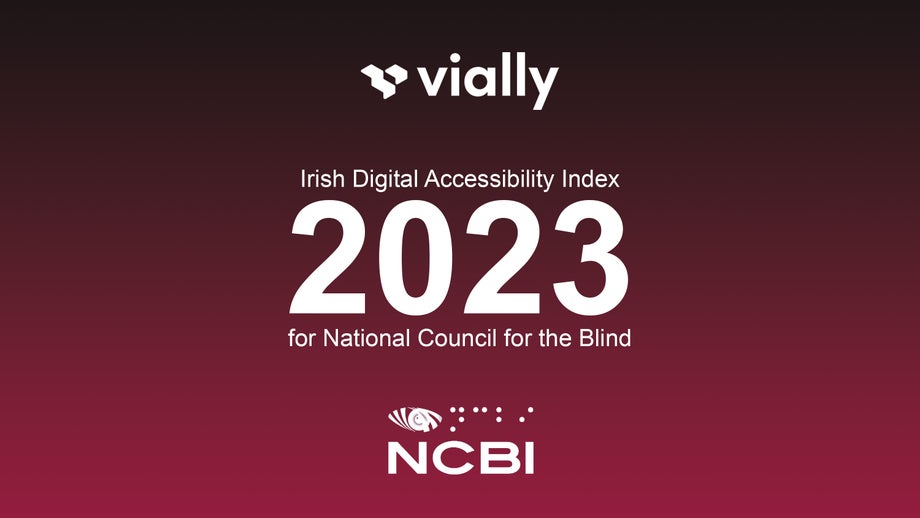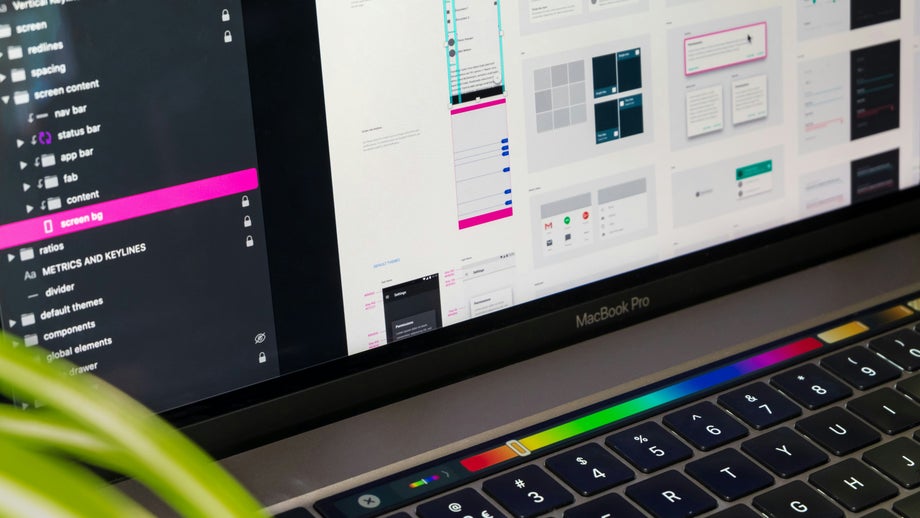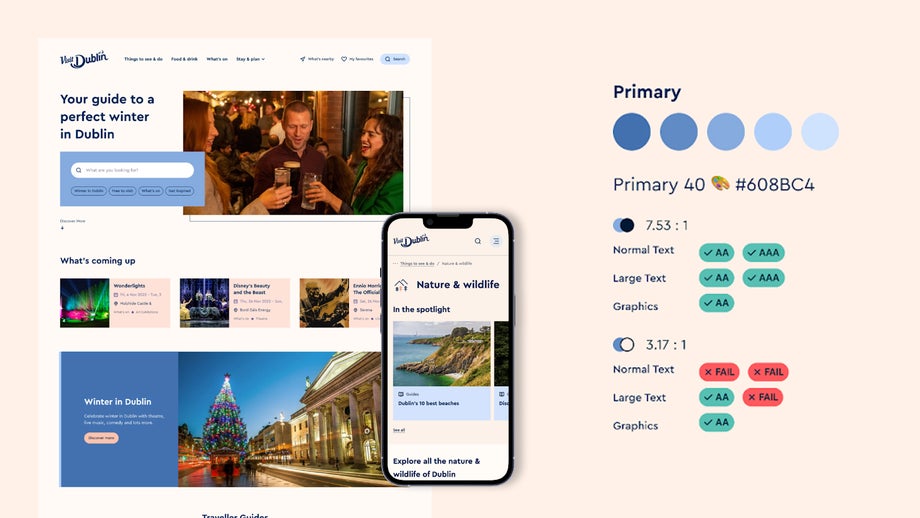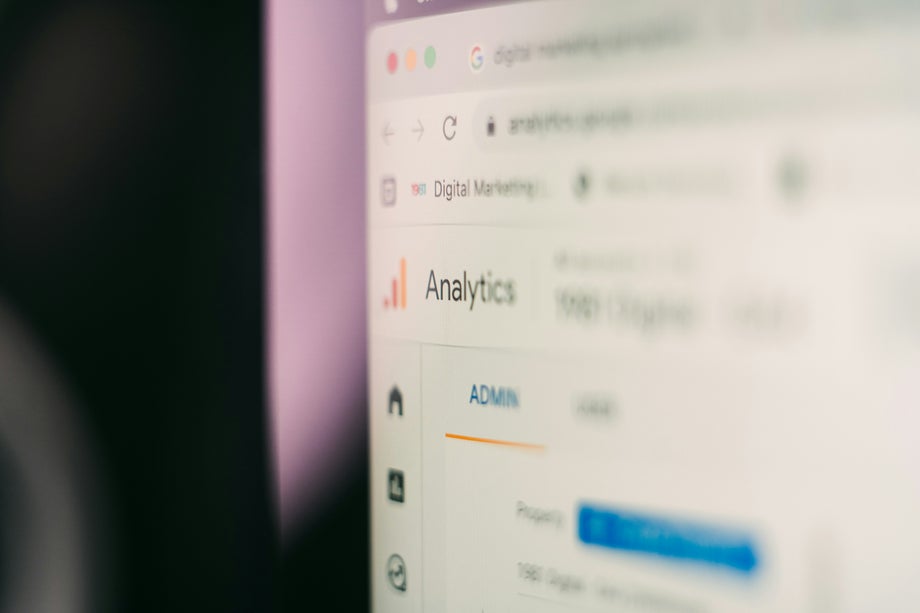

29.08.20247 mins read
Making your digital assets accessible isn’t just the right thing; it’s also the smart thing to do. As Caroline Dunlea, Chair of Digital Business Ireland, recently noted, “The continued upward trajectory of online sales in Ireland is a testament to the resilience and adaptability of our digital economy. With nearly €16bn in online sales projected for 2024, it’s clear that the digital sector is a major driver of economic growth.”
If all that isn’t enough to convince you of its importance, there is also the small detail that it’s the law. The EU Accessibility Act comes into effect next year, and under it, specific services and products will have to be digitally accessible.
However, if you or others in your organisation still need convincing or even just a better understanding of what digital accessibility means, then we’ve got you covered.
Recently, I sat down with Andy Power, Head of Growth at Vially, one of Ireland’s leading digital accessibility experts, to chat about digital accessibility and how brands can ensure they are serving all their customers online.
Andy: Digital accessibility refers to the design and function of websites and apps to ensure anyone, regardless of ability or disability, can access and use them for the intended purpose. So, while people with disabilities might use tools like screen readers to access a website, if the website isn’t built in an accessible way, they may not be able to use it. This can mean they can’t purchase an item of clothing or change their mobile phone plan online, for example.
Andy: I think that if your site or app isn’t accessible, making it so is a quick fix. There is an idea that all you have to do is buy a tool like an overlay, and suddenly, your website is accessible. Unfortunately, that is simply not the case. Digital accessibility is about proper universal design, and there are very clear and specific guidelines on best practices regarding becoming and staying accessible.
Andy: I think it’s primarily due to a lack of awareness of accessible design. Implementing great digital accessibility is far more complicated than most assume. It’s not just a box-ticking exercise but about understanding the user experience and acknowledging that, like data security, for example, most need external expertise and verification to ensure they’re doing things correctly.
To read the full report, click here.

Andy: The best and first place to start is with an audit. Having qualified accessibility experts assess your website and identify and log any issues gives you a clear starting point and plan to fix any issues and create a more inclusive experience for all your customers and visitors!
Andy: An audit involves manual and automated quality assurance (QA) testing of your digital asset, whether a website or an app, against guidelines that define what is digitally accessible. The standard is usually the Web Content Accessibility Guidelines (WCAG), an independently, globally monitored standard. An audit shows how you’re performing against these criteria and helps a business to prioritise major issues and assign resources to fix them. It’s the best starting point to get a view of how your business is designing, monitoring, and approaching accessibility, along with practical feedback on how to move towards a more inclusive experience for everyone.
Andy: It’s the right thing to do. Would you build an office block with no ramps for wheelchair users? Would you deliberately exclude any person from your shop because they had a disability? It’s unthinkable in the physical world, but it should be the same in the digital world.

Andy: I don’t think anyone sets out to make their website or app inaccessible. Everyone we speak to is 100% behind getting this right so that everyone can have an inclusive and enjoyable experience using their site. It almost always falls to education about what it means to be truly accessible, how it helps people, and that it’s not something you can do with a quick fix. It requires profound change within an organisation to embed accessibility from the design phase through to continuous monitoring of live products. In big companies, that can take time!
Andy: Unless it’s Twitter, sorry, X, social media platforms work hard to be accessible.
When it comes to the content you’re uploading yourself, remember these things, and you’ll be more accessible!
- Add alt text to your images.
- Use sentence case for hashtags, e.g. #DigitalAccessibility instead of #digitalaccessibility
- When posting infographics, make sure the text on the image has good contrast.
- Also, make sure that any text on the image is written in actual text elsewhere, e.g. the post itself or a linked website page.
Andy: The EAA is the most sweeping legislation in Europe yet, and it aims to improve consumers' access to the digital world regardless of ability or disability. The EAA will likely use WCAG guidelines to enforce a certain standard of digital accessibility on about 20 million companies across the EU. This includes banking, transport, utilities, eCommerce and more. It’s a fantastic step forward for accessibility, and if properly implemented, it will massively improve the online world for people with disabilities. Probably the most interesting feature is that it enables individuals to litigate against companies that are not digitally accessible.
Andy: An accessibility statement is a short declaration of a website's accessibility journey. It allows a business to talk about what it’s doing well and where it needs to improve. To conform to the EAA, an accessibility statement must follow a particular structure. It usually follows an audit and is updated as accessibility changes on the website. It shows your users your plan for addressing issues.
Andy: Apple excels at accessibility. Their products are a favourite amongst the disability community because of their usefulness. HSBC has spent years working towards being the most accessible bank in the world by embedding it at every level of the organisation.
Closer to home Dublin Bus has done tremendous work to become digitally accessible, winning an award last year for these efforts.

Andy: AI for accessibility will be the same as for anything else. It probably has specific use cases where we can use it to help design and monitor platforms for digital accessibility much more quickly and accurately. AI isn’t a panacea for anything; it’s a tool that can be leveraged to solve problems. If we can use it to solve certain challenges that currently need human interpretation or context, it will simplify getting things right for designers and businesses who want to do the right thing and become accessible for everyone.
Andy: In five years, digital accessibility will have expanded to any digital product, including B2B systems like HR, CMS, CRM, etc. It will become something that enables employment for those with disabilities and daily life using services like banking or online shopping. It will become embedded in the thoughts and design processes of developers, UX designers, and content creators. I see accessibility tools begin to focus on development and design so that the issues coming up for live users become fewer.

Andy: Vially is part of Vision Ireland. We’re a grassroots accessibility company, the only one from the community, focused on making the world digitally accessible for everyone. We see firsthand how technology can be the single greatest enabler for people with disabilities.
We support companies with manual and automated auditing, training, workshops, outsourced accessibility experts, and consultancy. Our work ranges from auditing a single live website to designing an accessibility strategy for large enterprise companies.

Take a look at "Time is running out: How to ensure your digital assets comply with the new EU Accessibility" - a webinar hosted by Zonja St. Clair, All human and Adela Buliman, Vially.


